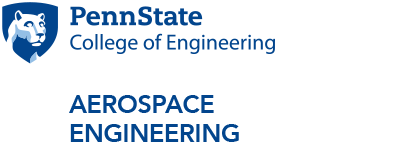
Wind Energy
Our research focuses on the areas of wind turbine aerodynamics and rotorcraft aeromechanics. Current activities include wind farm wake modeling, icing on wind turbines, wind turbine design and analysis, rotor hub flows, and rotor active control.
Key Faculty:
Wind Turbine Wake Modeling
Our research group performs a high-fidelity Large Eddy Simulation of wind turbine arrays immersed in neutral and moderately convective atmospheric boundary-layer flow. The computational grids of such simulations contain more than 30 million grid points and typically run on 512 CPUs. The objective of these simulations is to quantify turbulence statistics in the atmospheric boundary-layer flow and in the wakes of the wind turbines. Of particular interest are unsteady blade responses to the various coherent turbulent structures in the atmosphere and their effect on blade fatigue.
Continued work will increase our understanding of the relationships between power production and blade fatigue with the long-term goal of developing sophisticated control algorithms for entire wind farms that lower the cost of energy. Dr. Schmitz’s group is also interacting with Intelligent Light in using the FieldView software to create flow-visualization movies that enhance the physical insight into these complex flows.
Wind Turbine Icing
Performance losses due to atmospheric icing are a major concern for wind turbine operators. Dr. Schmitz and his colleague Dr. Palacios have been working with the National Center of Atmospheric Research (NCAR) on performing ice accretion experiments on selected wind turbine airfoils at various scaled icing conditions; ice shapes were subsequently molded and tested in the Hammond wind tunnel.
Using the lifting-line wind turbine design and analysis software, XTurb-PSU, they found that turbine power can decrease by as much as 30% due to icing events. As a next step, the research team is working on advanced control strategies for wind turbines that can decrease the amount of ice accretion on the blades, thus allowing for mitigated performance losses post icing events.
Wind Turbine Design and Analysis
Fast and accurate analytical tools are important for continued performance improvements of wind turbines. The ‘Rotary Wing Aerodynamics’ group of Dr. Schmitz maintains the XTurb code, a wind turbine design and analysis tool developed at Penn State. This code has advanced the state of the art in blade-element momentum and prescribed wake methods related to wind turbines. Dr. Schmitz uses this code extensively as an active research and teaching tool.
Several graduate students have added on to XTurb’s capabilities, and developments are ongoing. The code can be downloaded here and is also used in the online graduate course AERSP 583: Wind Turbine Aerodynamics.
Research Areas
- Aeroacoustics
- Air-breathing Propulsion
- Astrodynamics
- Autonomous Flight and UAVs
- Computational and Experimental Fluid Dynamics
- Flight Science
- Multifunctional Structures and Nanomaterials
- Rotorcraft Engineering
- Space Propulsion and Plasmas
- Structural Dynamics and Adaptive Structures
- Vehicle Dynamics and Control
- Vehicle Systems Engineering
- Wind Energy



